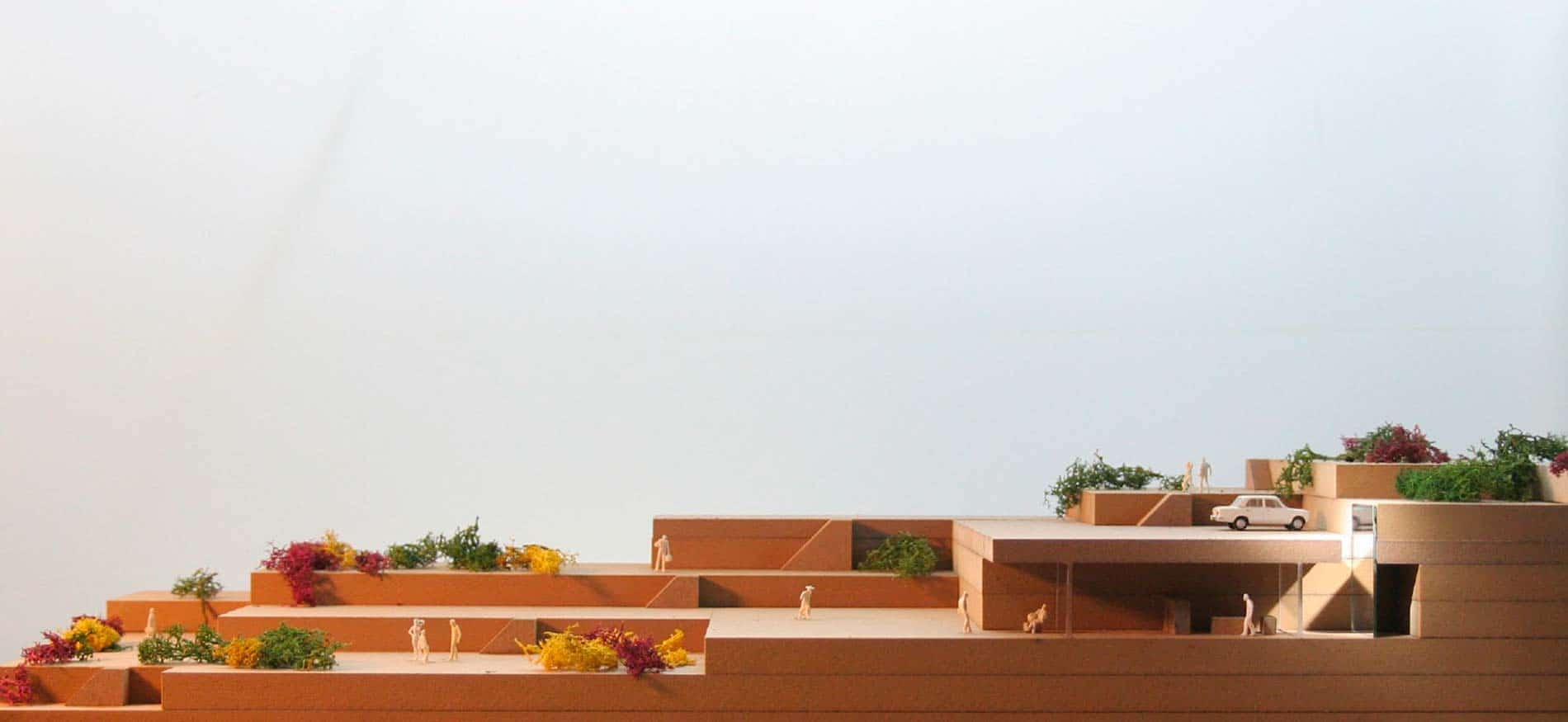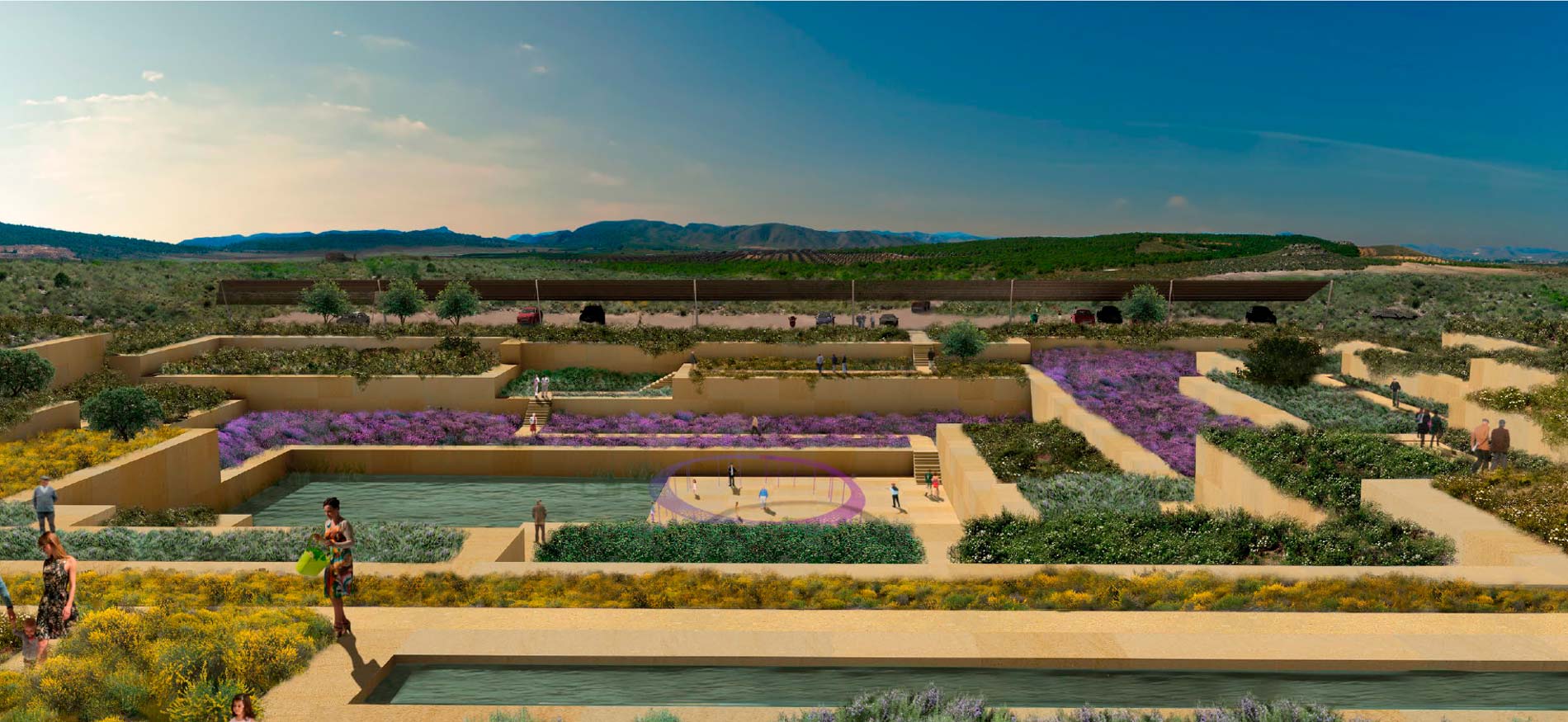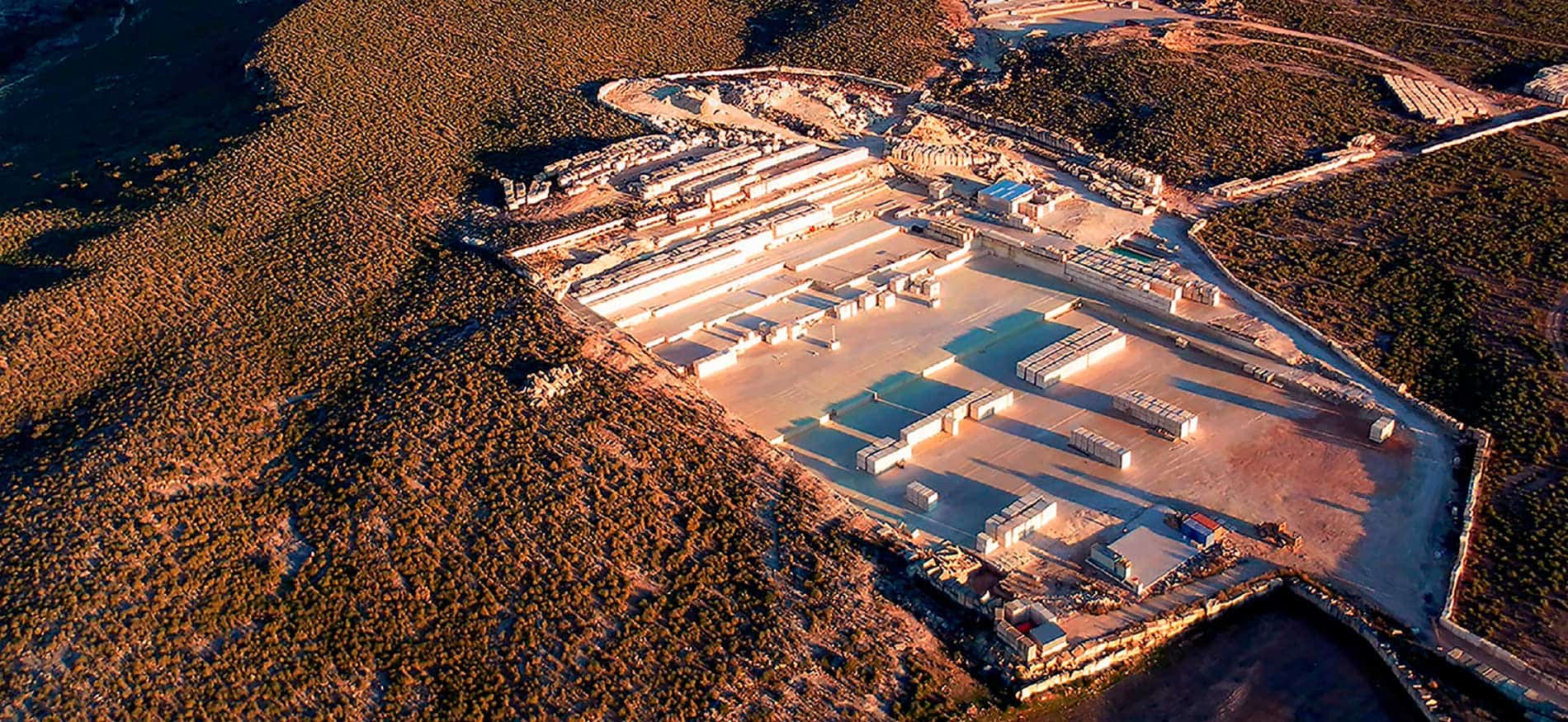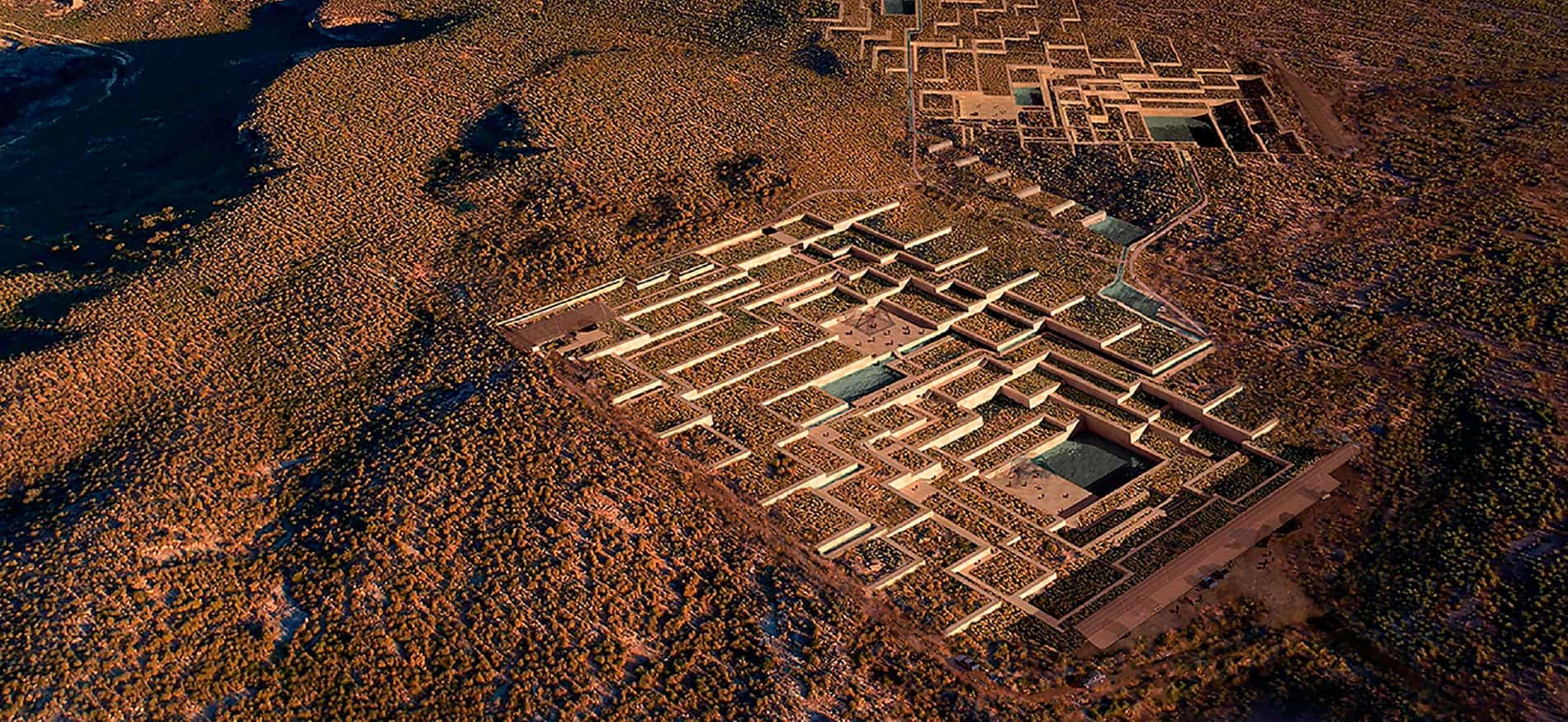During the year 2015, the company Rosal Stones, owner of the rights of exploitation of the Rosales Quarry, which is located in Hellín, Albacete, Spain, commissioned to the office of Architecture and Urban Planning SSS (Spanish Studio of Space) a Restoration Plan, in order to establish the basic guidelines for the landscape recovery, in the near future, to reverse the impact of the accomplished extractive activity. The project, which was based on the philosophy of the “Land Art”, consist in a geometric reconstruction of the land by means of reusing the leftovers of the activity itself, in order to create a totally new and contemporary landscape. The Recycling, re-vegetation and a projected innovative design solution sustains the guidelines, for this operation, which is about the landscape and the territory. The possibilities which offers the reusing and enjoying of this new natural environment can be different and truly enriching, and only will depend on a sensitive and respectful management of the man’s relationship with the nature.

“The land is not the scene of the work; it is a part of the work”
Consequently, the restoration project will be essentially a geometric reconstruction of the land, exploring the ways of understanding the landscape as a plastic material, with the goal of transforming the initial spatial spectacle regarding the extractive activity into a natural one.
Based on these new horizontal spaces is found the financial profitability, during the time of the landscape operation. The new and numerous horizontal spaces created will be the basis of two large complementary uses with multiple possibilities: One of them would be the creation of a huge “Mediterranean hanging garden” devoted to the autochthonous cultivation. It is about creating a productive landscape, beautiful and in balance with its surroundings where Holm oaks, Kermes oaks, Hawthorn, Juniper, Savin, Rosemary, Thymus and Anthyllis cytisoides (locally known as Albaida) can grow…
This garden (being productive or not) will be the background of greenery pertaining to the different rented horizontal spaces, devoted to the entertainment, the meeting of the people and that follow the outdoor spectacle experience. You will feel immersed in a wide space of a Mediterranean forest, with the sound and the aroma of its nature.
The transformation of the quarry space into a natural concave space will be accomplished following different phases, over time. This time will depend on the exhaustion of extractive activity and the financing funds.
In this regard, the proposed project sustains implicitly the idea of the evolutionary and adaptable construction. The construction of the different horizontal spaces will begin in the oldest and highest part of the Rosales quarry, moving forward in a downward direction until reaching the restoration to the deepest part of the concave space, where “the lagoon” is located. A fundamental aspect in the success of this operation will be the recycling of the different remaining materials from the extraction activities, for its use in the restoration. The defective blocks will serve for the construction of the retaining walls of the different platforms, and the dust and rubble material for the filling of these.
The current project, more than just a work regarding the concealment of the memory, wants to create a form of art between the ecology and the industry, recovering the ideas of the great Robert Smithson:
“The world needs coal and highways, but we do not need the wastes coming from the operation of an open-pit or those from the construction of the roads (…) The art can become a resource that intervene between the ecology and industry.”
This will be the main goal of the cooperation between Rosal Stones and the Spanish Studio of Space (SSS).
Dr. José Durán Fernández, Architect
Daniel Moreno Ruiz, Architect and Technical Architect
Spanish Studio of Space










Leave a comment